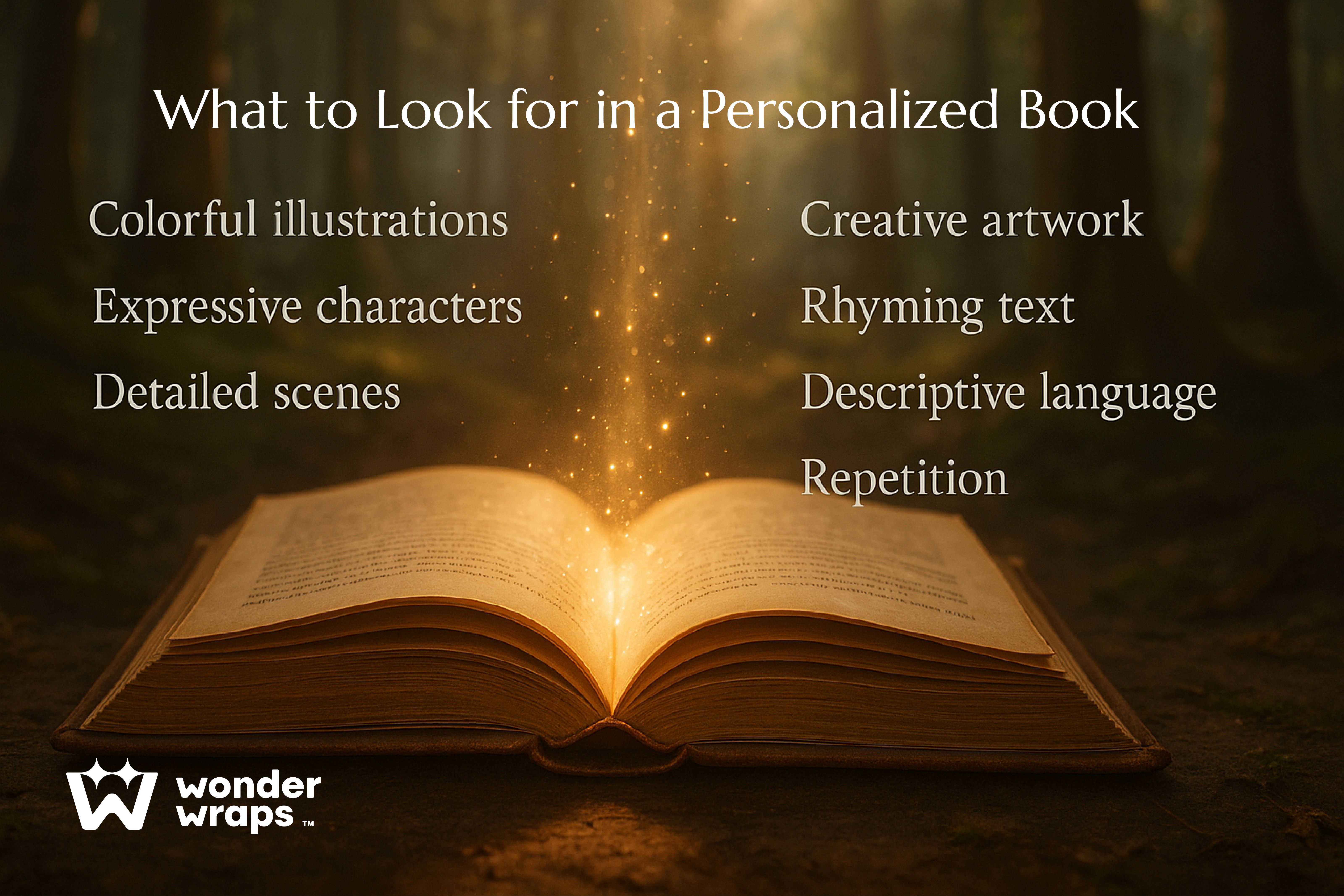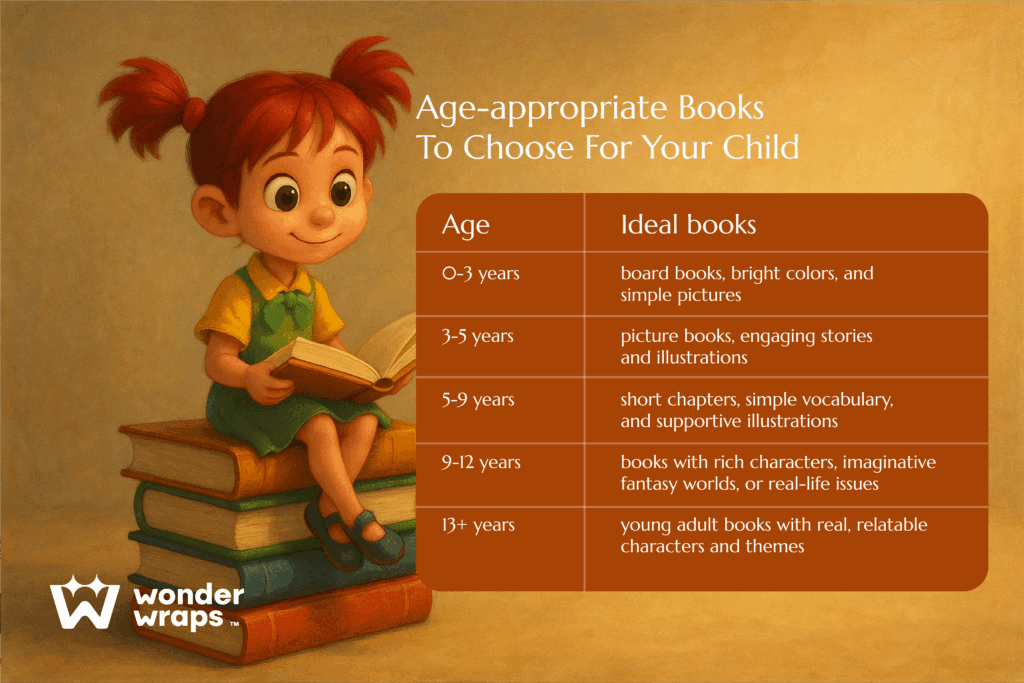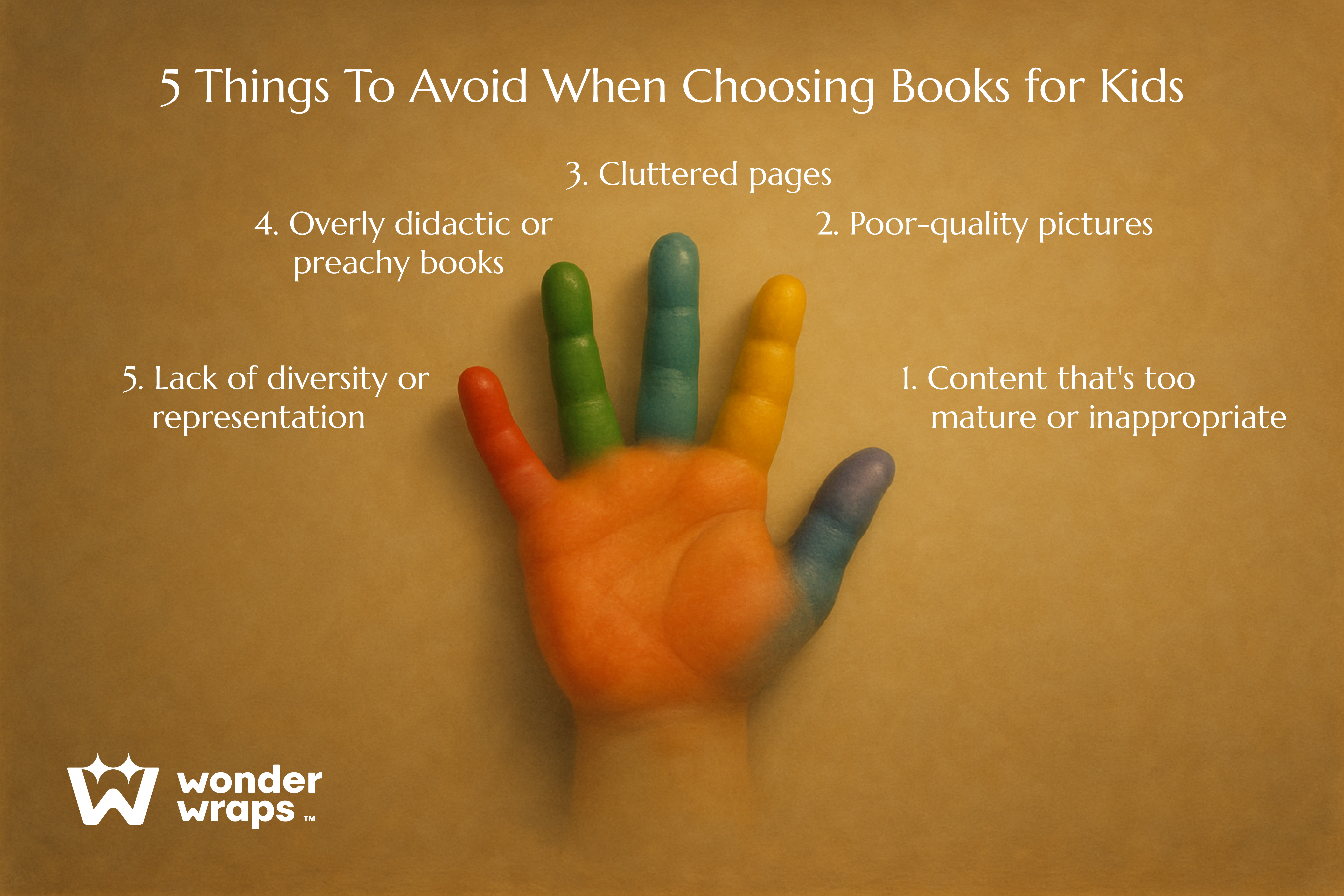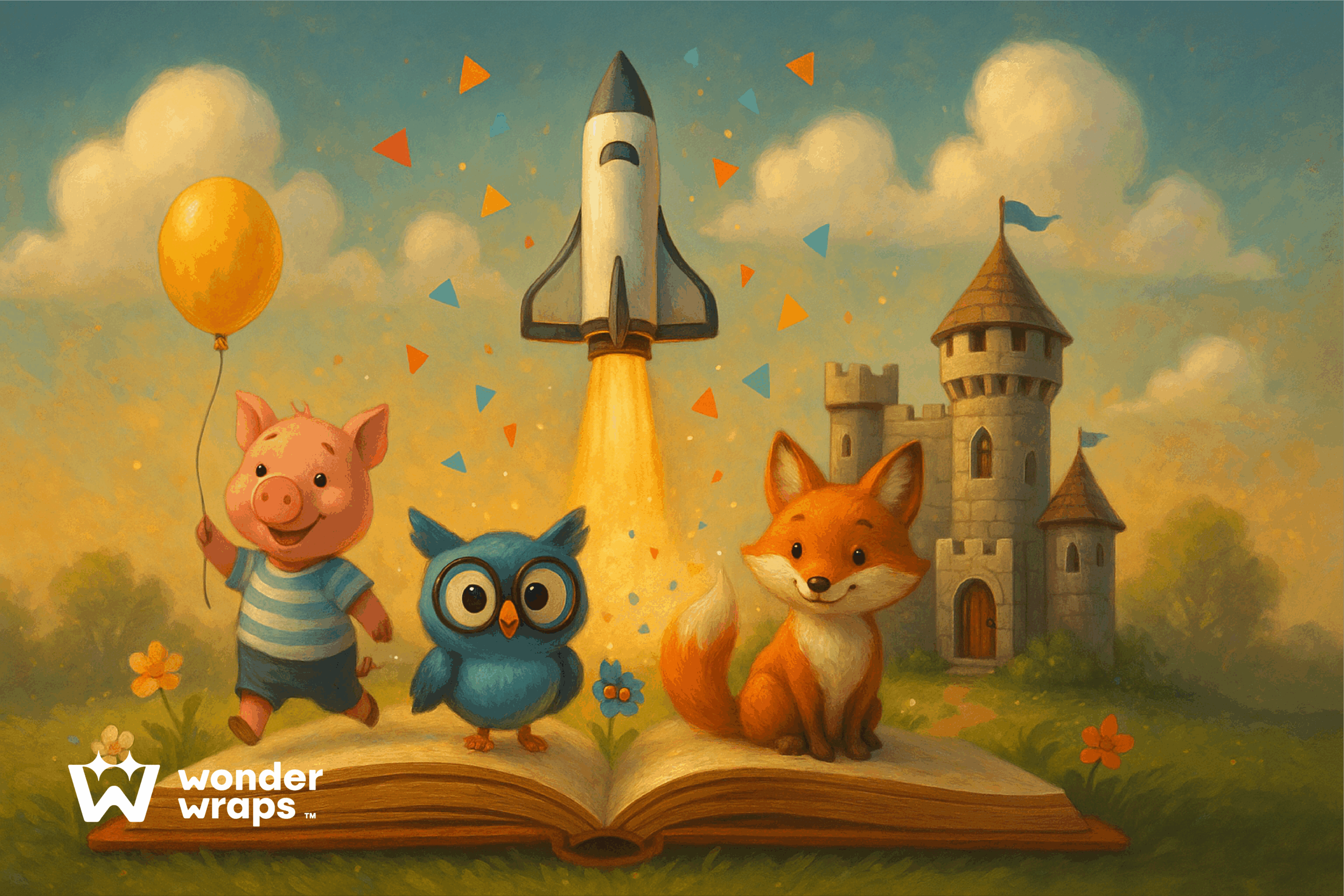Key Takeaways
- Choose books that match your child’s interests and reading level to keep them engaged and motivated.
- Look for books with vivid illustrations, positive messages, and age-appropriate content.
- Involve your child in picking books and exploring diverse, inclusive stories to build a lifelong love of reading.
Getting kids to fall in love with reading doesn’t start with rules or routines. It starts with the right books. When children connect with stories that speak to their imagination, curiosity, or sense of humor, something clicks. All of a sudden, reading becomes fun, not a chore.
But with so many books out there, how do you pick the ones that truly resonate? This guide on how to choose children’s books is here to help parents, educators, and caregivers find those magical reads that light up little minds and hearts.
How to Choose Children’s Books
Choosing the right books for your children lays the foundation for a lifelong love of reading. The right stories can spark imagination, build vocabulary, boost confidence, and nurture emotional growth.
Match books with your child’s interests
One of the easiest ways to get your child excited about reading is to match books with their interests. If your little one is obsessed with dinosaurs, a story featuring a friendly T-Rex might keep them turning pages.
For kids who love magic, fantasy books with young wizards or enchanted worlds can feel like an adventure. Animal lovers, on the other hand, might enjoy tales about talking pets or wild animal rescues. When children see characters or themes they care about, books become more than just pages—they become experiences.
Think about what your child talks about, plays with, or watches on TV, then find books that reflect those interests. Whether it’s outer space, fairy tales, sports, or superheroes, there’s a book out there that can make your child’s eyes light up. Matching their favorite themes with good storytelling is a powerful way to keep them engaged and help them build a positive relationship with reading.
Look for engaging visuals and language

Engaging visuals and playful language can make a big difference in how children connect with a book. Colorful illustrations help bring the story to life and support understanding, especially for younger readers who rely on pictures to follow along. Books with expressive characters, detailed scenes, or creative artwork can capture a child’s attention and spark their imagination.
Along with strong visuals, language plays a key role. Rhyming text, for example, adds a fun rhythm that makes reading feel like singing. Repetition can help kids remember words and sentence patterns, which builds confidence. Descriptive language allows children to picture the story in their minds and makes the reading experience more vivid.
When choosing books, look for ones that are both visually appealing and rich in language. These features not only keep children engaged but also support their literacy development in a way that feels enjoyable and natural.
Use the “5-finger rule” for independent reading
The “5-finger rule” is a simple way to help your child find books that are right for their reading level.
Open a book to any random page and ask your child to read it aloud. Each time they come across a word they do not understand or cannot read, they hold up one finger. If they reach five fingers before finishing the page, the book might be too difficult for independent reading.
One to two fingers usually means the book is just right—it offers a challenge without causing frustration. Zero fingers might suggest the book is too easy, but it could still be enjoyable for fun or review.
This method helps children choose books that support learning while keeping reading enjoyable. It also builds independence and confidence as they learn to recognize which books match their skills. Use this rule when visiting libraries, bookstores, or even browsing books at home.
Choose culturally diverse and inclusive books
Choosing culturally diverse and inclusive books helps children explore different perspectives, fostering empathy, curiosity, and respect for others. When young readers see a variety of cultures, identities, and experiences reflected in their books, they begin to understand the richness of the world around them.
Just as important as learning about others is the joy of seeing oneself in a story. That’s why WonderWraps offers personalized books that not only include your child’s name and traits but also allow you to celebrate who they are, whether through their background, traditions, or the loved ones featured in their story. Our books are designed to be as unique as the children who receive them.
By filling your child’s bookshelf with personalized stories that embrace a wide range of experiences and cultures, you’re helping build an inclusive mindset from an early age.
Be mindful of values, themes, and messages
When choosing books for your child, it is important to pay attention to the values, themes, and messages they carry. Stories can shape the way children view themselves and the world, so look for books that promote kindness, honesty, courage, and inclusion.
Make sure the content is age-appropriate by checking the storyline, language, and emotional tone. Some books may include complex or mature themes that are better suited for older readers. It is also helpful to steer clear of books that rely on harmful stereotypes or send confusing messages about gender, race, or behavior.
Before sharing a book with your child, take a few minutes to flip through the pages or read reviews. Many websites and parent guides offer summaries and age ratings. Choosing books with strong, positive messages helps your child learn important life lessons while enjoying a good story.
How to Choose Children’s Books by Age Group

Children’s books vary by age to match changing interests and reading abilities. Board books suit babies, while chapter books fit older kids. Choosing age-appropriate books keeps reading fun, understandable, and supportive of your child’s development.
Babies and toddlers (0–3 years)
At this age, reading is about bonding, sensory stimulation, and early language development. Parents should read aloud daily to help babies recognize sounds, rhythms, and expressions. Board books with thick pages, bright colors, and simple pictures are perfect for this age group.
Repetition and rhyming are important as they help babies learn word patterns and build memory. Touch-and-feel books or those with flaps to lift also add a sensory element that keeps little ones engaged.
As such, reading helps toddlers connect words with objects, express emotions, and begin to understand routines. Good examples include Goodnight Moon by Margaret Wise Brown and Where’s Spot? by Eric Hill.
Preschoolers (3–5 years)
Preschoolers are curious and imaginative, making storytime a key part of learning. Books help them understand emotions, routines, and relationships. Picture books with engaging stories and illustrations are ideal.
This age group benefits from books that ask questions or invite interaction, encouraging them to think and express themselves. Social themes like sharing, kindness, and bravery are especially meaningful now.
Reading aloud promotes attention span and early comprehension, while rhyming and repetition build vocabulary and listening skills. For preschoolers, try titles like The Very Hungry Caterpillar by Eric Carle and Don’t Let the Pigeon Drive the Bus! by Mo Willems.
Early and middle childhood (5–9 years)
At this stage, children begin to read more independently, which opens the door to exploring a wider variety of genres. Therefore, books with short chapters, simple vocabulary, and supportive illustrations work best to keep their interest and build confidence.
Reading during this period not only improves comprehension and fluency but also encourages critical thinking skills. It also plays a crucial role in developing empathy as kids start to relate to characters on a deeper emotional level. Humor, adventure, and familiar themes about school or family often capture their attention.
Moreover, series books are especially helpful because they offer a sense of familiarity that motivates kids to keep reading. Some excellent examples include Frog and Toad Are Friends by Arnold Lobel and Magic Tree House by Mary Pope Osborne.
Preteens (9-12 years)
Preteens are increasingly ready to engage with more complex plots and deeper emotional themes. Books suited for this age should challenge their thinking while remaining appropriate for their developmental stage.
During this time, children start exploring important topics such as identity, friendships, and moral decisions through the stories they read. Novels featuring rich characters, imaginative fantasy worlds, or real-life issues help expand their empathy and broaden their understanding of different perspectives.
Furthermore, they develop stronger critical thinking and comprehension skills as they engage in deeper discussions and personal reflection. Both series and stand-alone books that spark curiosity or inspire action are excellent choices. Noteworthy examples include Wonder by R. J. Palacio and Percy Jackson and the Olympians by Rick Riordan.
Teens (13+)
When kids hit their teen years, books turn into a way to understand themselves and the confusing feelings that come with growing up. At this age, reading helps them grow mentally and socially by building empathy and helping them see different points of view.
They’re drawn to young adult books with real, relatable characters and themes that explore identity, dreams, and struggles. Whether it’s contemporary fiction, fantasy, or mystery, these books keep their attention while encouraging them to think deeply about life.
The best books offer a balance of comfort and challenge, helping teens feel understood while also opening their minds. A couple of favorites are The Giver by Lois Lowry and The Fault in Our Stars by John Green.
Where to Find High-Quality Children’s Books
Finding great children’s books doesn’t have to be hard. Libraries are an amazing place to start as they have tons of books for all ages, and you can borrow them for free. Independent bookstores are another treasure trove, often with friendly staff who can help you pick the perfect book based on your child’s interests.
Teachers and other parents are great sources too; they often know what books kids love and what helps them learn. But if you’re looking for something special, check out WonderWraps. Our site offers carefully chosen children’s books that spark imagination and learning.
Whether you want stories that match your child’s interests or books that teach important values, you’ll find helpful recommendations and resources at WonderWraps. No matter where you look, the key is to keep exploring and finding books that make your child excited to read.
How to Involve Your Child in Book Selection
Getting your child involved in choosing books is a great way to make reading fun and personal. When kids pick their own books, they feel a sense of ownership and are more excited to read.
Take trips to the library or bookstore together and let your child explore the shelves. Talk about book covers, read blurbs, or look at sample pages to see what catches their interest. This helps them learn how to pick books that match their tastes and reading level.
At WonderWraps, you can even find books that offer personalization options, like adding your child’s name or special messages. These personal touches make reading feel extra special and encourage kids to dive into stories. The more involved your child feels in the process, the more likely they are to develop a lasting love for reading.
What to Avoid When Choosing Books for Kids

When choosing books for kids, it’s important to avoid certain pitfalls that can turn reading from a joy into a chore.
First, steer clear of books with content that’s too mature or inappropriate for your child’s age. Themes that are too complex or scary can confuse or upset young readers. Also, pay attention to the quality of illustrations and book layout. Poor-quality pictures or cluttered pages can make it hard for kids to follow the story or stay interested.
Another thing to watch out for is books that feel overly didactic or preachy. While teaching lessons is great, if a book feels like it’s lecturing instead of telling a story, kids might lose interest quickly. Of course, some books can balance lessons well, but it’s best to choose those that weave messages into the story naturally and creatively.
And finally, always look for books that are inclusive – reflecting various cultures, family structures, experiences, or abilities. It’s important for kids to see themselves and others in the stories they read.
Conclusion
Choosing the right children’s books is all about matching stories to your child’s interests, age, and reading level while looking for engaging language and positive messages. Remember to involve your child in the selection process to spark excitement and ownership. Reading together helps build important skills and creates a loving reading culture at home.
By choosing books thoughtfully, you’re giving your child the gift of imagination, learning, and confidence. For an extra special experience, explore WonderWraps’s books, where you’ll find carefully chosen books and fun personalization options that make reading even more magical for your little ones. Happy reading!
Frequently Asked Questions
What are the criteria for selecting books for children?
Select books that match your child’s age, interests, and reading level and offer positive messages with engaging illustrations.
What themes are best for children’s books?
Themes like friendship, adventure, kindness, animals, and magic work well to capture children’s imaginations.
What are the best books for a little girl?
For little girls, books with strong, relatable female characters and stories about friendship or exploration, like Ada Twist, Scientist or The Paper Bag Princess, are great choices.

